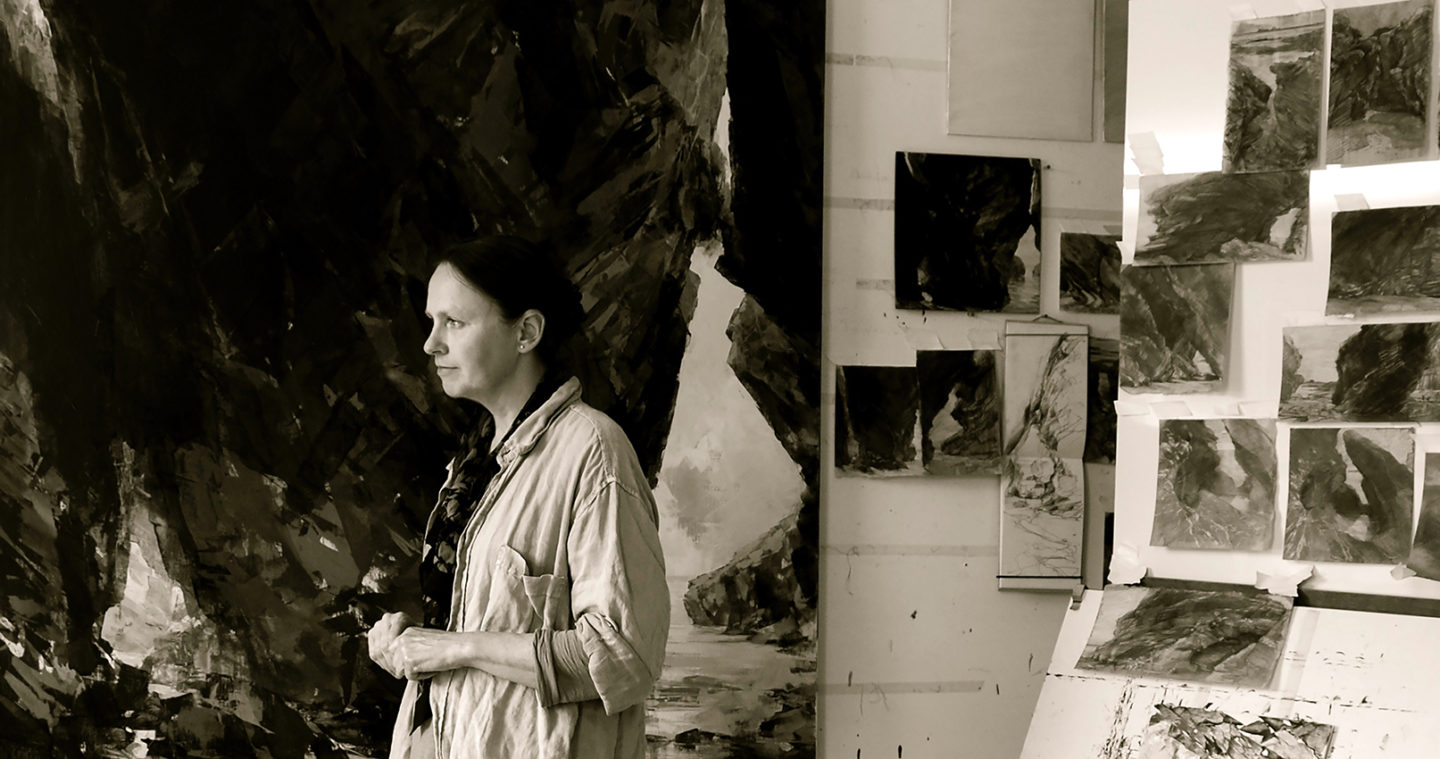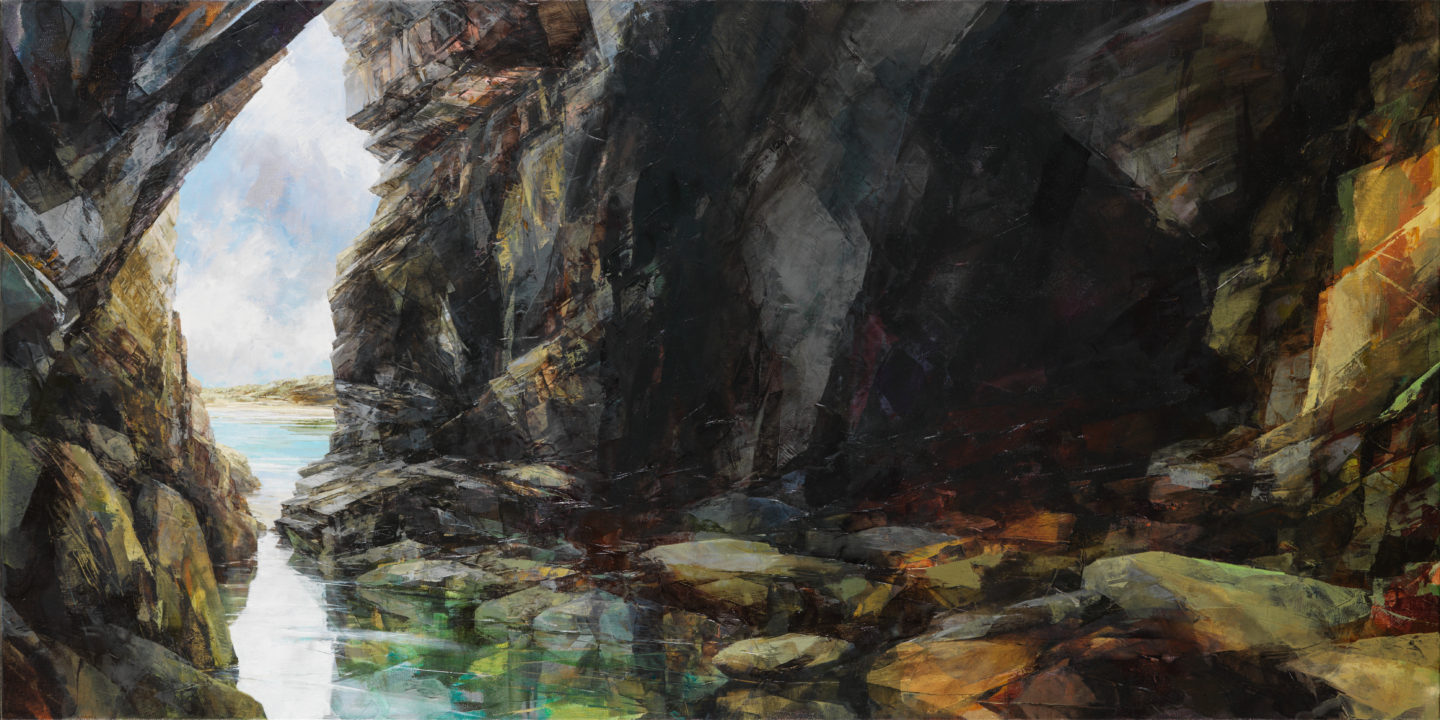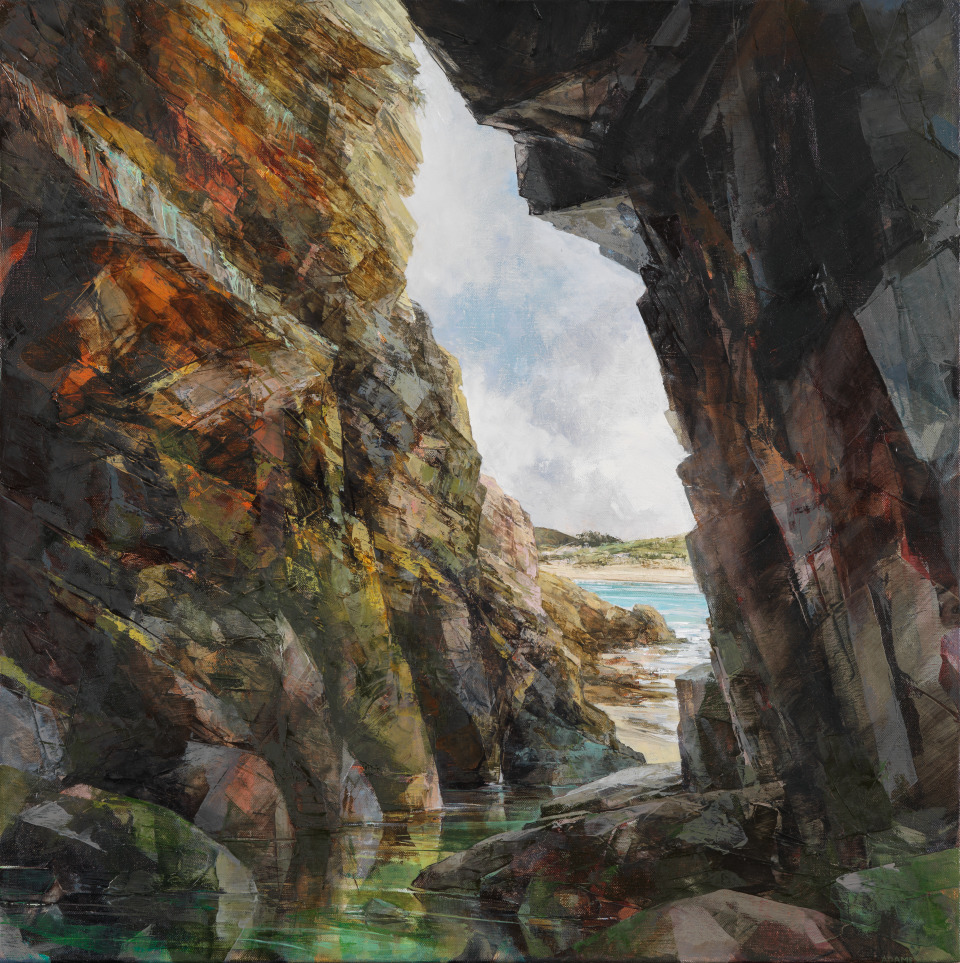Culture INSIDER
WE SPEAK TO THE ARTIST BEHIND SOME OF THE MOST POWERFUL AND BEAUTIFUL PAINTINGS IN BRITISH CONTEMPORARY LANDSCAPE ART
Grab a coffee and drive into this wonderful Q&A with Sarah Adams

Uptown Style: What inspired you to become an artist?
Sarah Adams: Art just kept finding space in the curriculum at school, despite my intention of doing something more academic. It quickly became a way of life.
Were you top of the class in art at school?
Sometimes. Not with the more abstract projects early on, but then in the first session of our O level course the teacher plonked an ornate, antique stove in the middle of the room. I was alright after that. My father had already taught me the basics of measured pencil drawing, so when we got on to observational work I found my feet.
You were a Jersey girl – what brought you to Padstow?
My first year of art college was at Falmouth School of Art, and I continued to visit Cornwall from time to time after that. Coastal landscape became my main focus during a spell back in Jersey in the 1990s, and when I escaped, Cornwall seemed the obvious place, and in particular, the north coast after walking the cliffs near Padstow.
You work in caves. How did that come about?
The move to this part of Cornwall swiftly led to an obsession with rock formations, which are so extraordinary and very plentiful around here. Also, I’d recently made some paintings of tropical gardens, views looking though trees, and the caves and arches allowed me to explore similar compositions to those.

And how do you know which ones to choose?
The best subjects are ones with a strong feature, or clear structure to them. More than one light source is good too, both on a practical level and because it does interesting things to the form. The presence of water, either inside the cave or outside in the distance, gives scale and context.
These are sea caves, flooded by high tides. Isn’t this just a little dangerous?
The great thing about tides is their predictability. Study the tide tables, keep an eye on your watch, and all will be well. That said, it still makes me nervous when I hear the waves approaching, even if there’s plenty of time left.
You paint the sea too. What does the sea say to you?
Although the tides are predictable, the sea and the light are constantly changing, so it’s never the same twice, even in the space of a few minutes everything looks different. After each high tide the beach sand is left as new, and the intertidal zone is such a special place: of the land, but belonging to the sea.
What’s the hardest thing about your job?
All the preparation. It takes about a week to prepare a canvas, but my least favorite thing is packing everything up for a day on site. It takes ages, and there’s always the worry that you’ll walk for miles only to find something vital didn’t find it’s way into the back pack. Once on site, the classic thing is to see someone determinedly picking their way across the rocks expressly to exclaim how ‘relaxing’ it must be to sit there painting, when all I want to do is concentrate on work without interruption. Every landscape painter I know dreads it too. I should be grateful for their interest, but painting requires concentration.
The colours and multiple layers of paint in your works are so extraordinarily beautiful. How does a painting come together?
Lots of layers. Months of building up thin films of underpainting, followed by many more months of over-glazing. The focus should always be on process, not a race to the finish. While resolving the painting is always the ultimate goal, it’s a bit like a jigsaw puzzle, all about the doing.
Is your studio your happy place?
Not always happy. Frustrating often as not. But it is where I spend most of my time, the best part of every day.
What motivates you to keep doing what you do?
Well, we are back to the jigsaw puzzles, really. Every time you start a piece of work it becomes a riddle that needs to be solved. It’s always an adventure, a way of finding out something new, not recycling old solutions. Finding the answer to one painting only raises more questions, which in their turn can only be answered by making more paintings. It rolls along.
You’re represented by one of the country’s best-known art dealers. What’s the best piece of advice he’s given you?
The joy of working with Rupert Maas is his great knowledge and love of art. We always try to visit an exhibition together when I’m in London, and he has opened my eyes to things I’d have ordinarily overlooked. A tiny Blake, for instance, in the Mellon Collection.

Do you get nervous before the Mayfair shows?
Apprehensive. Private views are stressful, trying to answer peoples questions, and all the hubbub. The lovely thing about a solo show is the project-based nature of it, putting together a collection of works, and then making the transition from solitary activity to being part of a team with the gallery. It can be great fun.
What’s it like to watch people reacting your work? Do you even notice?
Although every painting starts as a two way interaction with the artist, at some point it becomes a triangle, as the ‘viewer’ joins in. It shouldn’t influence the making of the work, and that’s one reason I never work to commission, but it is an aspect of finishing the work. Each time someone looks at a painting I get to see it with fresh eyes for a moment, and that’s very precious. It’s also important to learn that finished paintings have a life of their own, and people will read them in different and unexpected ways. You have to let go.
Has lockdown altered your working pattern?
Fortunately all the studies for work already on the go, and some for a new series, were already done, so I had no pressing need to work on site. A daily walk to the cove broke up the day, but I was very content to be solitary and studio bound.
Because you work in landscape and in nature, is there anything you wish people would understand or do better in terms of the environment?
Yes. Quite simply: STOP ABUSING IT! Every day I collect plastic items washed up on the beach that have no business being there. It’s only a matter of time before some of the more remote sea caves I visit will stay under water all year. It’s not that I’m against change, because the caves and cliffs are formed through a process of natural change, but I feel I’m documenting something that will soon be irreparably damaged or needlessly lost.
For further information and to see more examples of Sarah’s work, visit:
http://sarahadamspainting.co.uk
http://padstowstudio.co.uk/artists/sarah-adams/
http://www.maasgallery.co.uk/sarah-adams
Or Follow
https://mobile.twitter.com/padstowstudio?lang=en @sarah.padstowstudio
For more artist content, check out our culture section or our latest issue 2 of Uptown Style Magazine!
